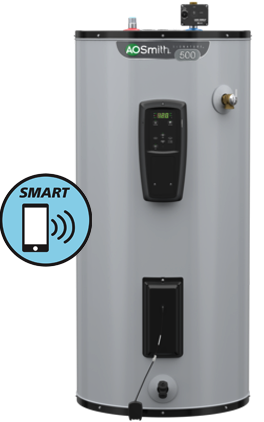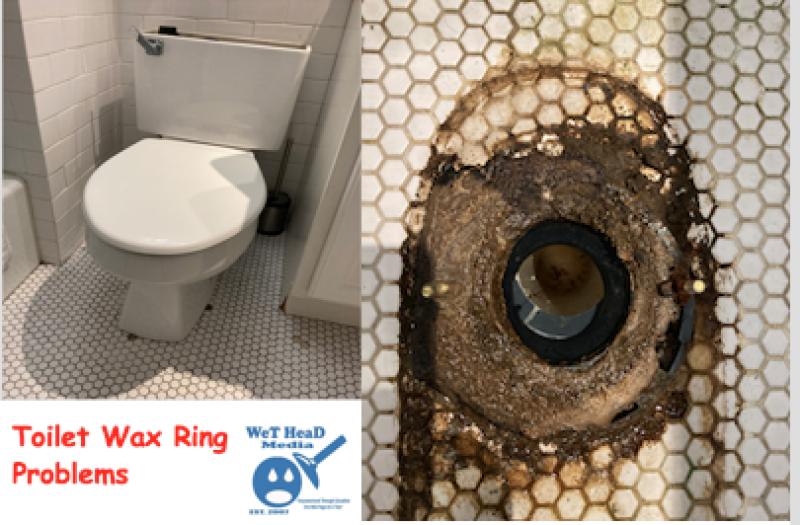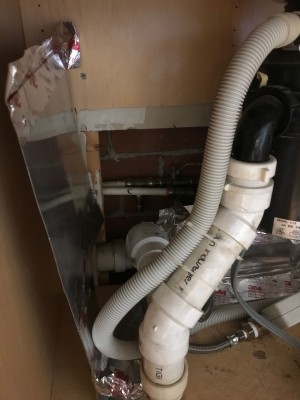An In-Depth Look At Household Water Supply
As most folks know, a home’s water is often supplied either from a local water utility company or a private well. This starting point is known as the water main.
Water Main Piping: What Is It and What Does It Do
The water main is piping that comes into the home either from a private well or local water company. It’s typically made of galvanized iron, copper or polyethylene and around one to one-quarter inch in diameter.
 This cold water main line is connected to the water meter, which measures how much water is used by the household for billing purposes. The one to one-quarter inch in diameter piping runs from the water meter and decreased to three-quarter inches in diameter when it’s close to the water heater.
This cold water main line is connected to the water meter, which measures how much water is used by the household for billing purposes. The one to one-quarter inch in diameter piping runs from the water meter and decreased to three-quarter inches in diameter when it’s close to the water heater.
With the pipe’s diameter reduced, there’s an increase in water pressure for the whole supply system. The cold water line will continue to the water heater, filter and softener. A water heater is a necessary requirement while the softeners and filters are noncompulsory.
Before you decide if you need a filter or softener, be sure you get a water quality report from your local water utility company or test the supply yourself. Of course, it is best to have a filter for your home’s drinking water.
There will be a single cold water main line that extends from the water meter for the basic household water supply system. With the utilization of a tee fitting, this will branch toward the water heater. One branch of this tee fitting flows to the cold water inlet with the other branch serving as the cold water supply. On the water heater, the “hot” outlet is the home’s source for hot water.
What Type Of Water Piping Does The Industry Commonly Use
The industry commonly uses PEX, CPVC and copper piping as the key water piping for both cold and hot water supply lines in a home and business. These pipes tend to be made up of three standard diameters. The three-quarter diameter pipe is utilized as a feeder line that supplies needed water volume for several half-inch diameter pipes.
These half-inch diameter pipes work as branch lines that then run through floors and walls to the kitchen and bathroom fixtures such as showers, sinks, bathtubs and toilets. Most toilets and sinks, these half-inch diameter lines are ran through floors and walls and connected with a decorative shutoff fitting or valve.
At the fitting, the piping diameter is reduced to three-eighths diameter tubing, which goes to the home’s toilet and sinks. For a shower or bathtub, the water volume, not pressure, is the issue. For that reason, half-inch diameter piping is generally used for the faucets. When the pipe diameter is reduced, there is an increase in water pressure in the line.
Galvanized Iron: Is It Really Better
In the past, cold and hot water supply lines were made of galvanized iron. However, due to its shortened lifespan, new constructions or remodeling do not use it. PEX tubing is one of the new types of tubing and is the best replacement possible for copper, CPVC and galvanized iron water lines. This tubing can be used for both cold and hot water and gives an increase of elasticity and sturdiness…something other tubing types cannot do.




I do trust all of the ideas you’ve offered to your post.
They’re very convincing and will certainly work. Still, the posts are
very short for starters. Could you please prolong them a bit from next time?
Thank you for the post.
Really excellent visual appeal on this site, I’d value it 10.
Thanks on your marvelous posting! I really enjoyed reading
it, you will be a great author.I will always bookmark your blog and definitely will come back in the foreseeable future.
I want to encourage yourself to continue your great posts,
have a nice weekend!